KCPE 2012 PAST PAPERS, ANSWERS AND REPORTS
YEAR: 2012
SOURCE: KNEC- KENYA NATIONAL EXAMINATIONS COUNCIL
0 Comments
K.C.P.E PAST PAPERS: 2012 SOCIAL STUDIES REPORT
The number of candidates that sat for the 2012 KCPE social studies increased from 766,355 in 2011 to 811,688 in 2012
Candidates General Performancecandidates ‘performance for the last four years
The following observations are made from the table above:
Syllabus coverageKCPE Social Studies Syllabus Coverage in 2012
The above table shows that the distribution of items according to the weighting of each topic in the syllabus was good. The three main topics covering a significant proportion in the syllabus were well represented: Resources and Economical activities (32%), Physical Environment (18%) and Political developments and systems 13%. Topics that are short and less emphasized in the syllabus have been given low representation: Citizenship (2%) and Democracy and Human rights (2%).
Distribution of Cognitive SkillsDistribution of cognitive Skills in The 2012 KCPE Social Studies
As shown in the table above, all levels of cognitive domain were tested. The distribution of the cognitive skills was even, based on the levels. The middle level skills had more questions; Comprehension 20%, Application 23% and Analysis 27%. The low level and high level skill had fewer questions, 10% of the total syllabus coverage.
Analysis of Performance per Item
From the above graph, the general performance per item was good. Only three items had a facility index of below 35%. Any item where the candidate scoring was below 35% was perceived as poor performance. These items are: 18(19.78%), 19(31.80%), 47(21.88%).
Questions with a facility index of 35 % and below
The items that performed poorly as per the facility index are discussed below. The discussion will focus on ideas, skills and thinking processes that the candidate might have gone through to come up with the answer. The asterisks * denotes the correct response.
Question 18:
|
|||||||||||||||||||||||||||||||||||||||||||||||||||||||||||||||||||||||||||||||||||||||||||||||||||||||||||||||||||||||||||||||||||||||||||||||||||||||||||||||||||||||||||||||||||||||||||||||||||||||||||||||||||||||||||||||||||||||||||||||||||||||||||||||||||||||||||||||||||||||||||||||||||||||||||||||||||||||||||||||||||||||||||||||||||||||||||||||||||||||||||||||||||||||||||||||||||||||||||||||||||||||||||||||||||||||||||||||||||||||||||||||||||||||||||||||||||||||
| OPTION | A* | B | C | D |
| % CHOOSING PATTERN | 31.80 | 20.23 | 24.69 | 22.01 |
| MEAN MARK | 43.72 | 32.35 | 34.83 | 35.72 |
|
|
Question 47
The main reason why petroleum products are transported using a pipeline is that it
- A. reduces the number of heavy vehicles on roads
- B. costs less than using other forms of transport
- C. protects the petrol from being stolen
- D. ensures that petrol is safe from fire.
Response Pattern
| OPTION | A | B* | C | D |
| % CHOOSING PATTERN | 19.35 | 21.88 | 10.89 | 46.57 |
| MEAN MARK | 40.39 | 38.84 | 35.46 | 35.90 |
General comments
- The general performance of the paper was good, most items behaved well in performance. Only five items were scored above 85% and five items were scored below 40%.
- There was an improvement in performance (mean 37.32) as compared to 2011 (mean 33.13) despite the increase in candidature.
- Teachers should keep up the good work and encourage the candidates to read questions carefully to avoid getting mixed up.
- Teachers should discourage rote learning, only questions that required a higher level of cognitive skills were performed poorly.
KCPE PAST PAPERS 2012 SCIENCE REPORT
GENERAL PERFORMANCE OF CANDIDATES
GENERAL PERFORMANCE OF CANDIDATES
| YEAR | 2007 | 2008 | 2009 | 2010 | 2011 | 2012 |
| NUMBER SAT | 698,367 | 688,049 | 719,376 | 739,620 | 766,712 | 811,706 |
| MEAN RAW MARK | 29.72 | 27.62 | 29.96 | 29.82 | 33.63 | 32.02 |
| STANDARD DEVIATION | 9,20 | 7.40 | 8.69 | 8.94 | 9.11 | 9.51 |
SYLLABUS COVERAGE
| SN | TOPIC | NO. OF ITEMS | PERCENTAGE |
| 1.0 | HUMAN BODY | 3 | 06 |
| 2.0 | HEALTH EDUCATION | 2 | 04 |
| 3.0 | WEATHER AND ASTRONOMY | 2 | 04 |
| 4.0 | PLANTS | 4 | 08 |
| 5.0 | ANIMALS | 6 | 12 |
| 6.0 | WATER | 3 | 06 |
| 7.0 | MAKING WORK EASIER | 4 | 08 |
| 8.0 | PROPETIES OF MATTER | 8 | 16 |
| 9.0 | ENERGY | 8 | 16 |
| 10.0 | FOOD AND NUTRITION | 4 | 08 |
| 11.0 | ENVIRONMENT | 2 | 04 |
| 12.0 | SOIL | 4 | 08 |
| TOTAL | 50 | 100 |
ANALYSIS OF PERFORMANCE IN SCIENCE ITEMS
Question with a facility Index of 30% and below
| Question Number | 12 | 28 | 49 |
|
% of candidates choosing the correct response |
25.58 | 18.75 | 19.85 |
Question 12
(i) Making the slope gentle.
(ii) Reducing the effort applied.
(iii) Changing direction of the force applied.
(iv) Reducing friction.
Which of the statements apply to a single fixed pulley?
A. (i) and (iv).
B. (i) and (ii).
C. (ii) and (iii).
D. (iii) and (iv).
Response Patterns
| OPTION | A | B | C | D* | NO ANSWER |
| % CHOOSING THE OPTION | 7.52 | 7.83 | 57.83 | 25.58 | 1.19 |
| MEAN MARK IN OTHER QUESTIONS | 22.64 | 25.19 | 33.95 | 34.78 | 26.36 |
|
|
Question 28
- A. Touching sockets with wet hands.
- B. Putting pencils in sockets.
- C. Overloading the sockets.
- D. Putting iron nails in sockets.
Response Patterns
| OPTION | A | B | C* | D | NO ANSWER |
| % CHOOSING THE OPTION | 7.16 | 61.82 | 18.75 | 11.01 | 1.2 |
| MEAN MARK IN OTHER QUESTIONS | 23.79 | 33.22 | 32.87 | 29.71 | 26.94 |
|
|
Question 49
- A. increase the growth of weeds
- B. release specific nutrients to the soil
- C. destroy micro-organism in the soil
- D. cause pollution of the soil.
Response Patterns
| OPTION | A* | B | C | D | NO ANSWER |
| % CHOOSING THE OPTION | 19.85 | 68.5 | 7.82 | 2.43 | 1.34 |
| MEAN MARK IN OTHER QUESTIONS | 36.03 | 32.06 | 24.94 | 23.58 | 26.90 |
GENERAL COMMENTS
KCPE PAST PAPERS 2012: SCIENCE QUESTIONS AND ANSWERS [QNS 26-50]
A card made in the shape of letter E and numbers 1,2 and 3 written on it was placed in front of a mirror as shown in the diagram below.
The reason why improved jikos have a clay lining is to
- A. reduce the amount of heat loss
- B. reduce the space for charcoal
- C. make charcoal light faster
- D. make the jiko last longer.
Which of the following practices will NOT result in a person getting an electric shock?
- A. Touching sockets with wet hands.
- B. Putting pencils in sockets.
- C. Overloading the sockets.
- D. Putting iron nails in sockets.
Which of the following groups of sources of energy are renewable?
- A. charcoal, kerosene, sawdust.
- B. water, firewood, animal dung.
- C. Diesel, wind, natural gas.
- D. Biogas, petrol, coal.
Which of the following pairs of food is preserved by smoking, salting and drying?
- A. Meat and mushrooms.
- B. Beans and fish.
- C. Mushrooms and beans.
- D. Meat and fish.
Which of the following is the MAIN reason why eating bread after expiry date is discouraged? The bread could have
- A. lost nutrients
- B. a bad taste
- C. some micro-organisms
- D. changed its colour.
Which of the following pairs consists of diseases caused by lack of minerals in the diet?
- A. Anaemia and rickets.
- B. Kwashiokor and anaemia.
- C. Marasmus and Kwashiokor.
- D. Rickets and marasmus.
A hilly area with deep channels is LIKELY to be experiencing
- A. sheet erosion
- B. gulley erosion
- C. nil erosion
- D. splash erosion.
The diagram below shows an improvised rain gauge.
- A. have the funnel sealed to its mouth
- B. be wide to collect enough water
- C. be placed above the ground
- D. be transparent for easy reading.
The diagram below represents a model of the solar system prepared by class six pupils.
- A. using threads instead of wires
- B. placing a ball of clay next to the one representing the sun
- C. placing two balls of clay on one thread
- D. using balls of clay of different sizes.
The MAIN reason why mothers are encouraged to breast feed their infants is because breast milk
- A. boosts immunity of the infant
- B. is free from disease causing germs
- C. is at the right temperature for infants
- D. is easily digested by infants.
A person in the incubation period of HIV infection will show
- A. signs and symptoms but test negative
- B. no signs and no symptoms but test positive
- C. no signs, no symptoms and test negative
- D. signs, symptoms and test positive.
Which of the following is a preventive measure against the spread of tuberculosis?
- A. Clearing bushes around houses.
- B. Boiling drinking water.
- C. Proper disposal of human waste.
- D. Living in a well ventilated house.
In which of the following are characteristics of cumulus and nimbus clouds CORRECTLY placed?
For two masses X and Y, the mass of X was twice that of Y. The diagram below shows a set-up that was used to investigate how thetwo masses balance at positions Q, R, S and T on a seesaw.
The diagram below represents a simple electric circuit
- A. Chemical—>electrical——>heat—>light.
- B. Electrical—>chemical—>Light--->heat.
- C. Chemical—>electrical——>Light--->heat.
- D. Electrical—>light—>chemical—>heat.
Which of the following practices LEAST pollutes the soil?
- A. Spraying crops to kill pests.
- B. Burning plant wastes in the farm.
- C. Disposing of animal wastes in the farm.
- D. Burying plastics in the soil.
In an investigation, equal amounts of soap was added to equal amounts of water samples W and Z obtained from different sources.
(i) W formed lather.
(ii) Z formed suspended particles.
Which of the following statements about W and Z is NOT CORRECT?
- A. W may have fewer minerals.
- B. Z may form lather after boiling.
- C. W can form scales in kettles.
- D. Z wastes soap when washing.
Which of the following consists of materials with a definite volume and definite shape?
- A. Water, bottle, stone.
- B. Paper, pin, ink.
- C. Kerosene, cooking oil, milk.
- D. Sand, flour, sugar.
Which of the following practices will conserve soil?
- A. Using dry grass for mulching.
- B. Burning vegetation on farms.
- C. Ploughing along the slope.
- D. Burying plastic materials.
Soil becomes waterlogged due to
- A. its colour
- B: the size of its particles
- C. the absence of small animals in it
- D. the amount of air in it.
Which of the following is the CORRECT procedure that is used to obtain clear water from muddy water?
- A. Filtering and decanting.
- B. Evaporating and filtering.
- C. Decanting and filtering.
- D. Evaporating and decanting.
- A. Spraying and de-worming.
- B. Herding and dipping.
- C. De-worming and rotational grazing.
- D. Dipping and spraying.
Which one of the following statements is TRUE about manures? They
- A. increase the growth of weeds
- B. release specific nutrients to the soil
- C. destroy micro-organism in the soil
- D. cause pollution of the soil.
The following are activities that pollute the environment.
(ii) Oil spillage from tankers.
(iii) Using diesel as fuel in vehicles.
(iv) Dumping vegetable waste.
Which activities pollute air?
- A. (i) and (iv).
- B. (ii) and (iv).
- C. (ii) and (iii).
- D. (i) and (iii).
KCPE PAST PAPERS 2012: SCIENCE QUESTIONS AND ANSWERS [QNS 01-25]
Which of the following is a tuber crop?
- A. Onion.
- B. Carrot.
- C. Pineapple.
- D. Cabbage.
A beam balance is used for
- A. measuring volume of objects
- B. comparing mass of different objects
- C. measuring height of objects
- D. comparing size of different objects.
In which of the following groups of activities is friction NOT required?
- A. Writing and erasing.
- B. Skating and braking.
- C. Flying and swimming.
- D. Walking and riding.
Animals provide plants with
- A. support and carbon dioxide
- B. manure and oxygen
- C. carbon dioxide and pollination
- D. pollination and oxygen.
Which of the following statements about blood vessels in the human body is CORRECT?
- A. All veins carry de-oxygenated blood.
- B. Blood pressure in arteries is higher than in veins.
- C. Arteries have valves that control flow of blood.
- D. Arteries have thinner walls than those of veins.
Which of the following CORRECTLY represents the path taken by food from the oesophagus?
- A. Stomach —> small intestines —> large intestines —> rectum —> anus.
- B. Small intestines —> large intestines —>stomach —> rectum —> anus.
- C. Stomach —> large intestines —> small intestines —> rectum ----> anus.
- D. Large intestines —> stomach ---> small intestines —> rectum —> anus.
Which of the following types of human teeth is CORRECTLY matched to its function?
- A. Incisors Tearing and cutting.
- B. Canines Tearing and crushing.
- C. Premolars Cutting and grinding.
- D. Molars Crushing and grinding.
A plant which has deep and widely spread root system is LIKELY to have
- A. broad leaves
- B. many leaves
- C. succulent stems
- D. weak stems.
Which of the following groups of crops consists of cereals ONLY?
- A. Peas, beans and green grams.
- B. Maize, rice and sorghum.
- C. Millet, cow peas and maize.
- D. Green grams, sorghum and rice.
The diagrams below represent two levers E and F with different positions of load, effort and fulcrum.
Which of the following pairs of plants is CORRECTLY matched with the type of root system?
- A. Grass Wheat
- B. Tomato Blackjack
- C. Coconut Acacia
- D. Kale Onion
The following are statements about how different simple machines make work easier.
(ii) Reducing the effort applied.
(iii) Changing direction of the force applied.
(iv) Reducing friction.
Which of the statements apply to a single fixed pulley?
- A. (i) and (iv).
- B. (i) and (ii).
- C. (ii) and (iii).
- D. (iii) and (iv).
Which of the following groups of animals consists ONLY of invertebrates?
- A. Crab, newt and snail.
- B. Centipede, snail and spider.
- C. Newt, centipede and slug.
- D. Slug, frog and crab.
Which of the following statements is TRUE?
- A. Fish have constant body temperature.
- B. Birds have varying body temperature.
- C. Young ones of amphibians live on land.
- D. Reptiles breathe through the lungs.
Which of the following are examples of herbivores, carnivores and omnivores?
Which of the following pairs consists only of animals with scales?
- A. Toad and duck.
- B. Turtle and salamander.
- C. Turtle and duck.
- D. Salamander and toad.
The following are some practices that help prevent the spread of water borne diseases.
(ii) Washing fruits before eating them.
(iii) Washing hands before eating.
(iv) Wearing gumboots when walking in stagnant water.
Which practices will help control the spread of bilharzia?
- A. (i) and (ii)
- B. (i) and (iv)
- C. (ii) and (iii)
- D. (iii) and (iv)
Transfer of heat by convection takes place in
- A. gases and liquids
- B. solids and liquids
- C. solids and vacuum
- D. gases and vacuum.
|
|
The diagram below represents the processes I, II, III and IV that are involved in change of states of matter.
The pie chart below shows proportions of G, H, J and K that represent the components of air.
Which of the following factors makes wax to float on water?
- A. Shape of material.
- B. Type of material.
- C. Size of material.
- D. Mass of material.
In which of the following are both materials CORRECTLY grouped as magnetic and non-magnetic?
- A. Copper Zinc.
- B. Zinc Steel.
- C. Aluminium Copper.
- D. Steel Aluminium.
The following are activities carried out to investigate the effect of heat on a liquid.
(ii) Filling the bottle with coloured water.
(iii) Fixing a straw on the cork.
(iv) Closing the bottle tightly with the cork.
Which one of the following is the CORRECT ORDER of the activities?
- A. (ii), (iii), (iv), (i).
- B. (iii), (iv), (ii), (i).
- C. (ii), (i), (iii), (iv).
- D. (iii), (ii), (i), (iv).
The diagram below shows a set-up that can be used to investigate the effect of heat on matter.
- A. gases change state when heated
- B. solids expand when heated
- C. gases expand when heated
- D. solids change state when heated.
The diagram below represents a set-up in which a ruler is fixed to a desk and its free end pulled to positions L, M, and N. At each position the free end is released to produce sound.
- A. special sounds
- B. loud and soft sound
- C. direction of sound
- D. noise pollution.
Archives
January 2023
November 2022
October 2022
June 2022
January 2022
September 2020
May 2020
December 2019
November 2019
October 2019
September 2019
August 2019
July 2019
March 2019
Categories
All
COMPOSITION
CRE
ENGLISH
HRE
INSHA
IRE
KCPE 2004
KCPE 2005
KCPE 2006
KCPE 2007
KCPE 2008
KCPE 2009
KCPE 2010
KCPE 2011
KCPE 2012
KCPE 2013
KCPE 2014
KCPE 2015
KCPE 2016
KCPE 2017
KCPE 2018
KCPE 2019
KCPE 2021
KCPE 2022
KCPE PAST PAPERS
KISWAHILI
MATHEMATICS
PDF
QUESTION ON TOPIC: MATHEMATICS
REPORT
SCIENCE
SOCIAL STUDIES
|
Primary Resources
College Resources
|
Secondary Resources
|
Contact Us
Manyam Franchise
P.O Box 1189 - 40200 Kisii Tel: 0728 450 424 Tel: 0738 619 279 E-mail - sales@manyamfranchise.com |
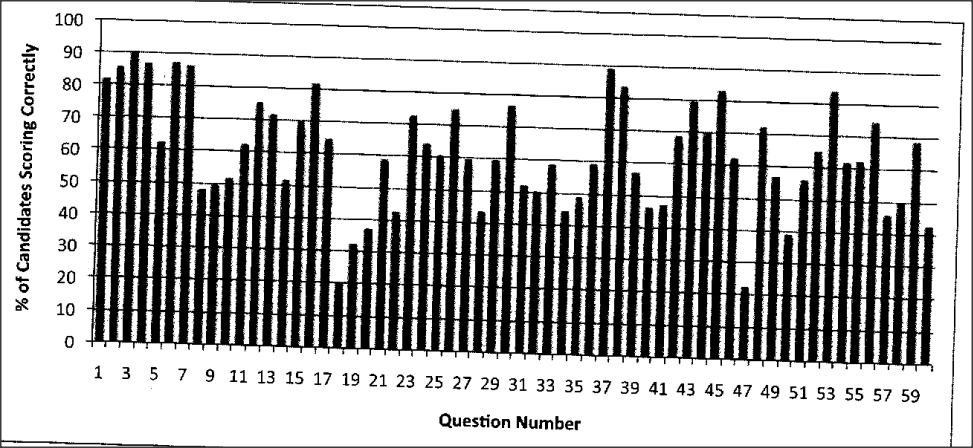
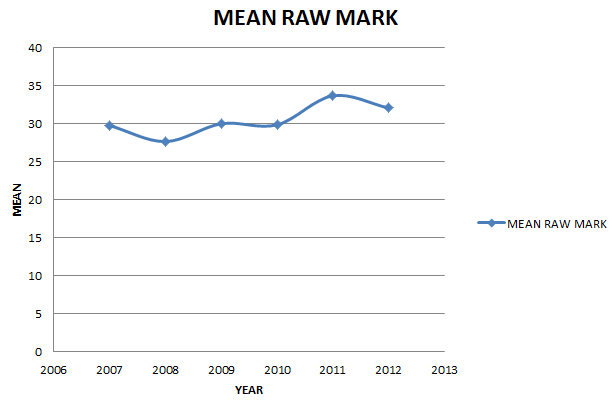

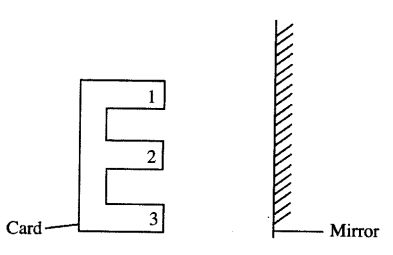
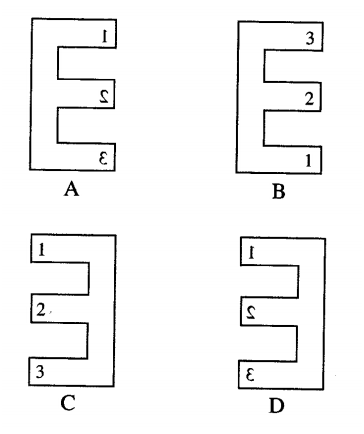
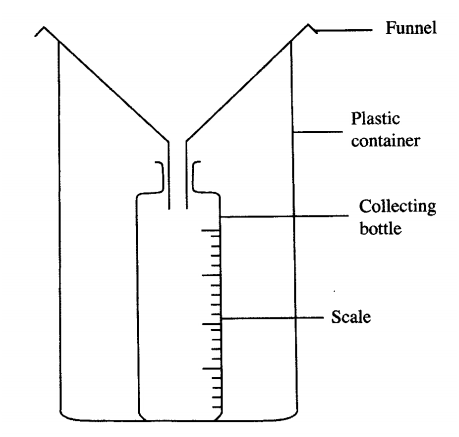
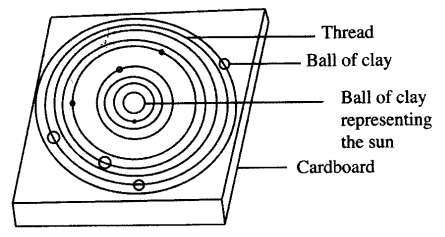
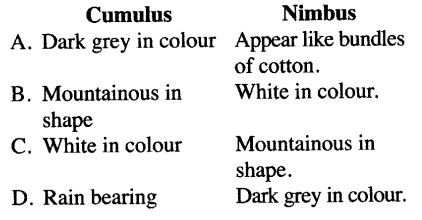

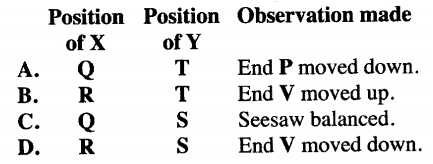
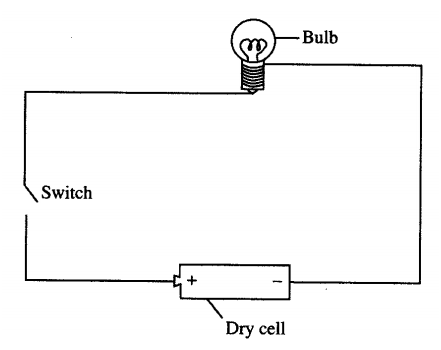
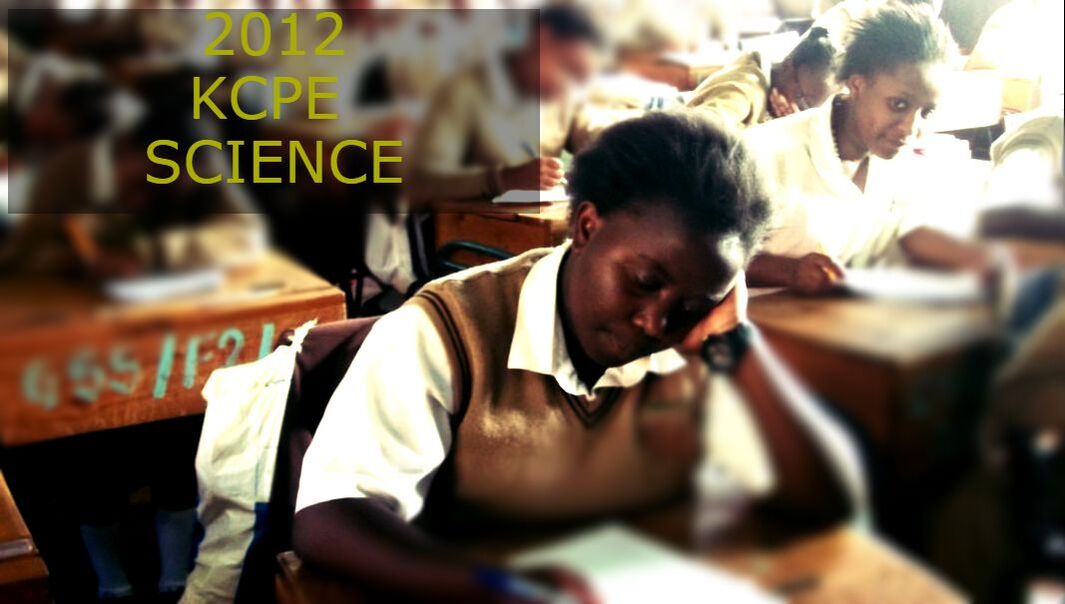
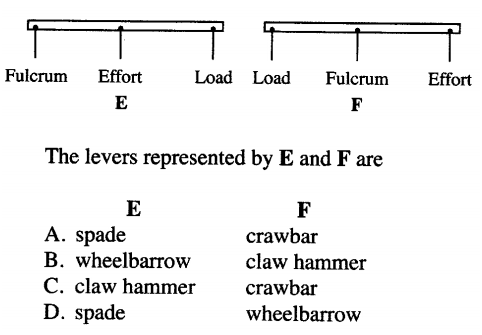

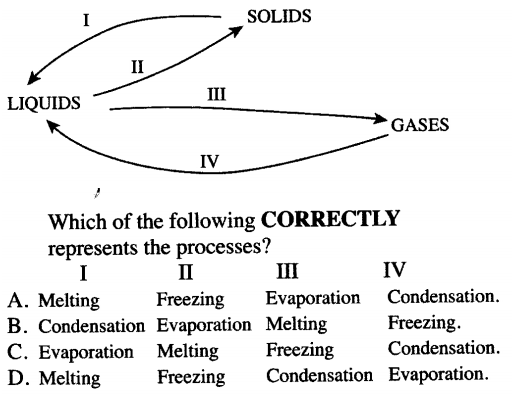




 RSS Feed
RSS Feed

